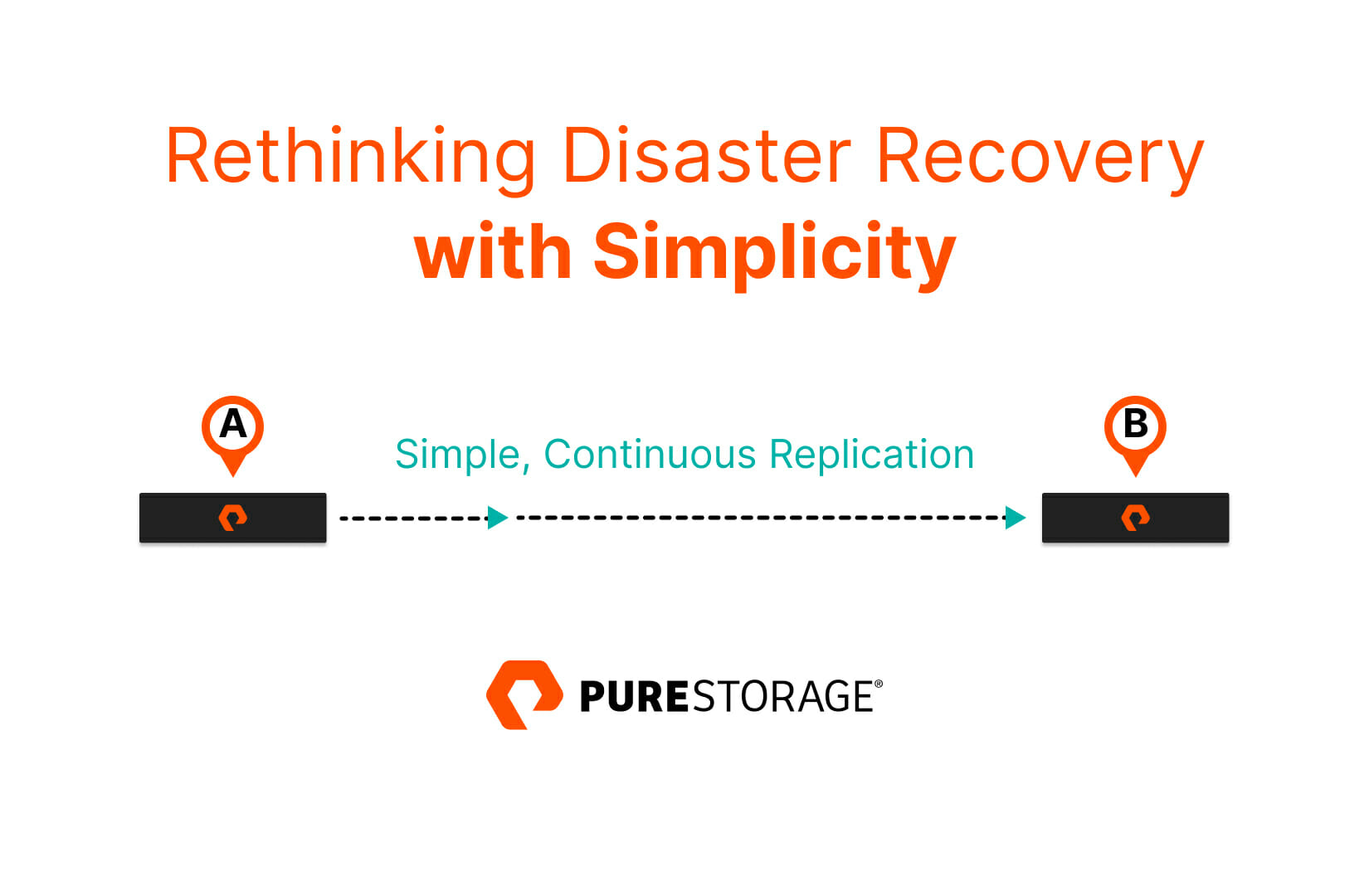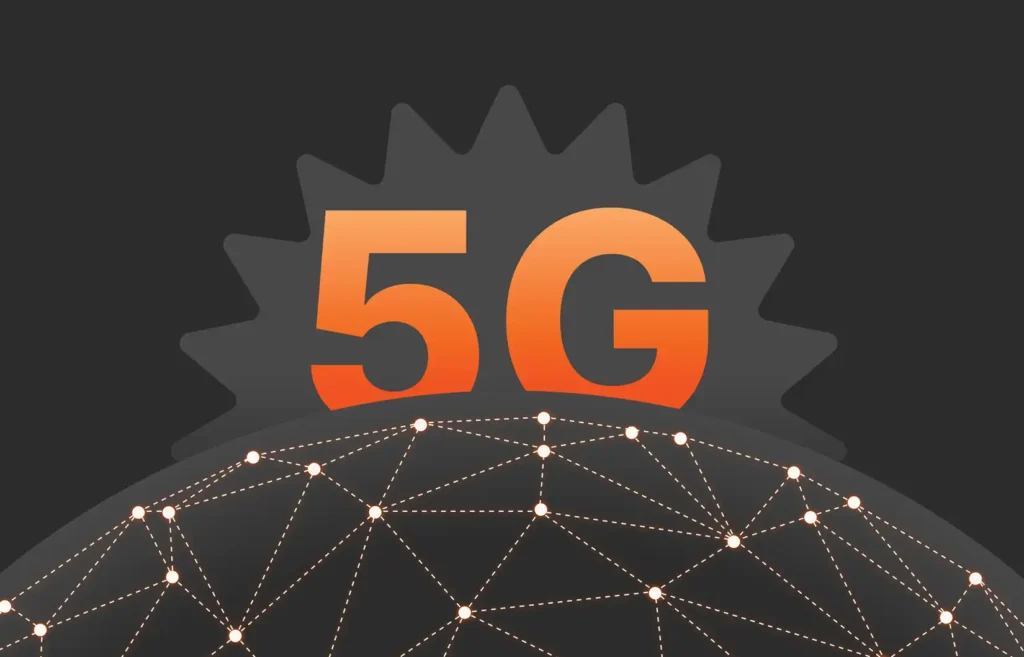“Our team really appreciated the simplicity of the solution. Complex solutions require more resources and staff training.” –CTO, City of New Orleans
In a previous blog post on business continuity and disaster recovery (DR), we shared how the City of New Orleans adopted ActiveDR™ for their DR requirements and realized impactful business results through its simplicity and innovation.
In this three-part blog series, we’ll zoom out to explore three different types of value that Pure’s approach to business continuity/disaster recovery provides to any customer:
- Simplicity
- Optimization for modern use cases (the next installment)
- Maximizing financial value (the capstone of the series)
The value that the City of New Orleans found in the solution is the result of rethinking DR with a user-centric approach—precisely the way we build products at Pure.
Traditionally, the disaster recovery use case has been a complicated task involving arduous effort to onboard, lengthy instruction manuals to set up, and recovery requiring copious amounts of both IT expertise and time. The biggest DR pain points we hear from organizations that have not yet experienced the power of ActiveDR are:
- Complexity around actually using the solution
- Recovery reliability when it’s needed
- The cost of implementation and ongoing maintenance
In talking to storage administrators, we’ve found that since DR is critical for business risk management, they have to succumb to available approaches. But disaster recovery doesn’t need to be a complicated use case. It can be simple and user-friendly. This is our north star at Pure: to uncomplicate the most complex scenarios.
What Is ActiveDR?
ActiveDR is a continuous, near-real-time replication solution between two Pure Storage® FlashArray™ systems, either within or across data centers. This allows customers a near-zero RPO of data protection across their business environment with minimal data loss for disaster recovery purposes. These writes are continuous, not synchronous. As a result, there’s no performance impact to the source system or any requirements for low roundtrip latency between data centers.
When building ActiveDR, Pure took the approach to put users first. In this blog post, I’ll share a few key highlights that we’ve taken to simplify traditional DR in storage and make storage admins’ lives easier. In the next part of this blog series, I’ll share how we’re evolving ActiveDR to support IT modernization to accelerate digital transformation for customers.
Uncomplicating Disaster Recovery
Let’s look at the different types of value that our innovative approach to business continuity/disaster recovery offers based on three core tenets.
Simple Is Better
With ActiveDR, the onboarding, setup, and administration of your DR workflow has been simplified to three steps that can be driven by CLI, REST API, or GUI based on user preference. To see how, watch this quick video demo.
The steps are:
- Create the logical container “POD” to group the volumes that the user would like to replicate from the source to the target.
- Move (or create) the volumes of interest into the pod that the user would like to protect with replication.
- Set up a logical “Replica Link” between the source pod and target pod to complete the setup and kickoff replication.
That’s it. Once you have your two arrays (production and DR) connected over the network via IP or FC, it’s only a matter of minutes to configure your DR setup. The complete onboarding experience is source-driven, so you don’t need to hop between source and target arrays. You can also define the snapshot policy (in addition to continuous replication) and QoS limit if you need these objects to be replicated for the pod as well. A great testimony to its ease of use is that a majority of our ActiveDR customers were able to self-configure it and had an exceptional experience while doing so.
DR Reliability—Testing Is Believing
Disaster of any kind is an unfortunate and stressful situation. In the midst of a crisis is not the time to realize that your recovery plan is flawed. Being able to confidently rely on your DR plans is only possible if you perform testing frequently to ensure your IT staff is familiar with the DR system. With ActiveDR, we’ve baked in the functionality for testing your DR with a single command. In addition to facilitating easy testing, you can do it at your DR site, without disrupting your production workload or losing your RPO. Severing replication between production and DR sites just for testing is history.
Imagine testing your DR without causing any issues to the business and, on top of that, while you’re performing the test, you don’t have to compromise on losing RPO on your production data either. The DR testing workflow is exactly the same as actual failover to the DR site, so you are pretty much simulating the DR failover and making sure it works.
Read this technical white paper to understand how we achieve it.
No Cost Instead of Low Cost
One of the most important considerations for customers is the cost of such a feature. If you look at other vendors offering similar solutions, they either require add-on licensing or extra hardware costs to support it. But our approach is different.
With Pure, you’re subscribing to innovation, and as we innovate, you can enjoy the new features. This includes ActiveDR, which comes with FlashArray (and the Purity operating environment). No extra hardware, no extra licensing. If you’re using a FlashArray system that’s running Purity OS 5.0 or above, you can enable DR replication capabilities at no additional cost. This competitive, customer-friendly feature is available right out of the box.
Read part 2 of this series to learn how Active DR is optimized for modern use cases.
![]()




